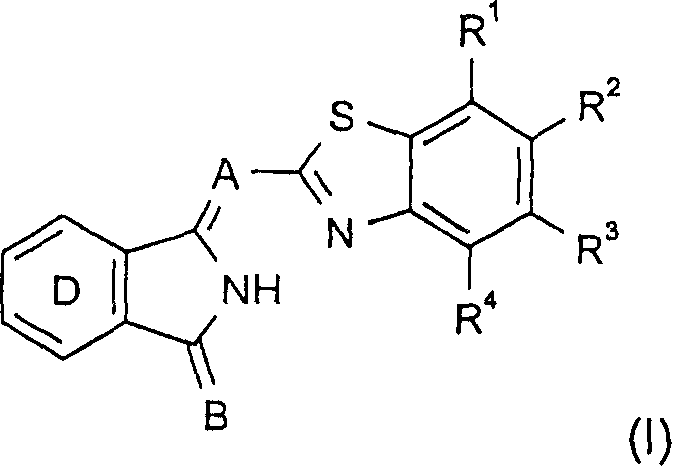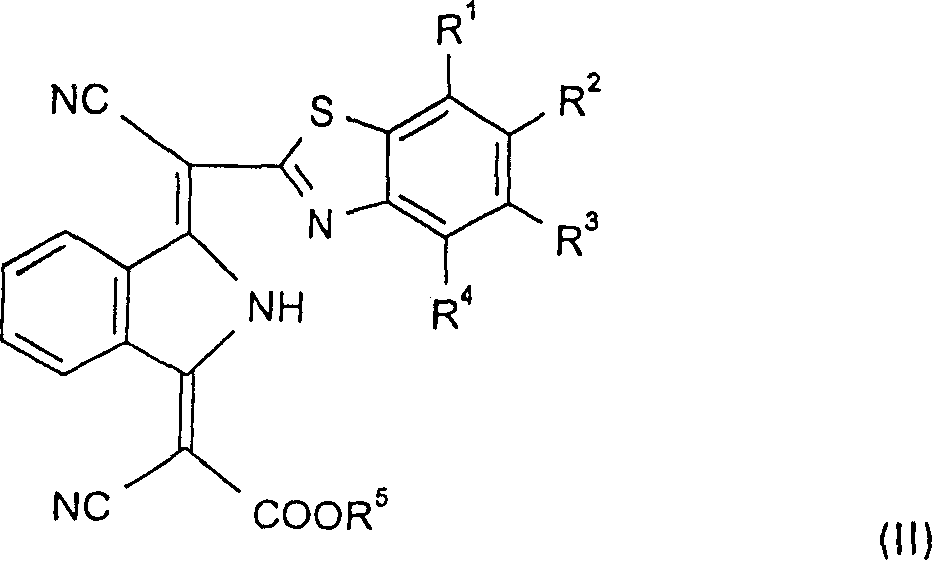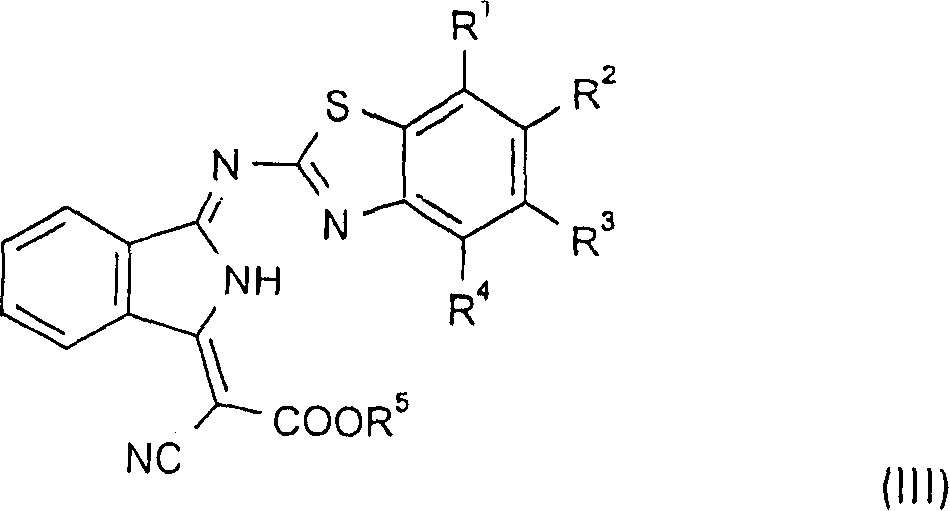Highly fadeproof inks used for digital textile printing
A fabric printing and printing technology, applied in the direction of ink, application, household utensils, etc., can solve the problems of unsatisfactory application properties such as color yield and printing fastness
- Summary
- Abstract
- Description
- Claims
- Application Information
AI Technical Summary
Problems solved by technology
Method used
Image
Examples
preparation example Construction
[0065] Ink paste (containing 25% dye) preparation: 125 grams of dye is mixed with X weight equivalent (1 weight equivalent is equivalent to 125 grams) of dispersant / dispersant mixture and 375-125X grams of deionized water, and the mixture is stirred Grind in a ball mill to make the average particle size <250nm and the maximum particle size less than 1μm. It is also possible to add other additives such as bactericides, defoamers, etc., and some organic solvents during the grinding process of the ink paste.
[0066] The ink paste thus prepared (containing 25% dye) was added to the other components of the ink (organic solvent, other additives, water), and the components were thoroughly mixed in a dissolver by stirring. The inks were ready to use once they were filtered through standard commercial filter paper (Macherey-Nagel MN-614).
Embodiment 1
[0068] Fabric fibers made of polyester are padded with a solution consisting of 50 g / l of 8% sodium alginate solution, 100 g / l of 8-12% bean gum ether solution and 5 g / l of monosodium phosphate in water, and then dry. 70% of the solution was absorbed. This pretreated fabric was then printed with a drop-on-demand (piezoelectric) inkjet print head using an aqueous ink prepared as described above and comprising the following ingredients,
[0069] 3.5% dye (1)
[0070]
[0071] 2.5% Dispersant Disperbyk 190
[0072] 30% 1,5-pentanediol
[0073] 5% Diethylene glycol monomethyl ether
[0074] 0.01% fungicide Mergal K9N
[0075] 58.99% water
[0076]Let the print dry completely. Fixation was carried out by superheated steam for 7 minutes at 175°C. The print is then subjected to an alkaline reduction post-treatment, washed with warm water and then dried.
Embodiment 2
[0078] Fabric fibers made of polyester are padded with a solution consisting of 50 g / l of 8% sodium alginate solution, 100 g / l of 8-12% bean gum ether solution and 5 g / l of monosodium phosphate in water, and then dry. 70% of the solution was absorbed. The thus pretreated fabric was then printed with a drop-on-demand (bubble) inkjet print head using an aqueous ink prepared as described above and comprising the following ingredients,
[0079] 2% dye (2)
[0080]
[0081] 1% Dispersant Tego Dispers 740W
[0082] 20% glycerin
[0083] 0.01% fungicide Mergal K9N
[0084] 76.99% water
[0085] Let the print dry completely. Fixation was carried out by superheated steam for 7 minutes at 175°C. The print is then subjected to an alkaline reduction post-treatment, washed with warm water and then dried. A high-brightness orange-yellow print with excellent durability and fastness to heat and light is obtained.
PUM
 Login to View More
Login to View More Abstract
Description
Claims
Application Information
 Login to View More
Login to View More - R&D
- Intellectual Property
- Life Sciences
- Materials
- Tech Scout
- Unparalleled Data Quality
- Higher Quality Content
- 60% Fewer Hallucinations
Browse by: Latest US Patents, China's latest patents, Technical Efficacy Thesaurus, Application Domain, Technology Topic, Popular Technical Reports.
© 2025 PatSnap. All rights reserved.Legal|Privacy policy|Modern Slavery Act Transparency Statement|Sitemap|About US| Contact US: help@patsnap.com



